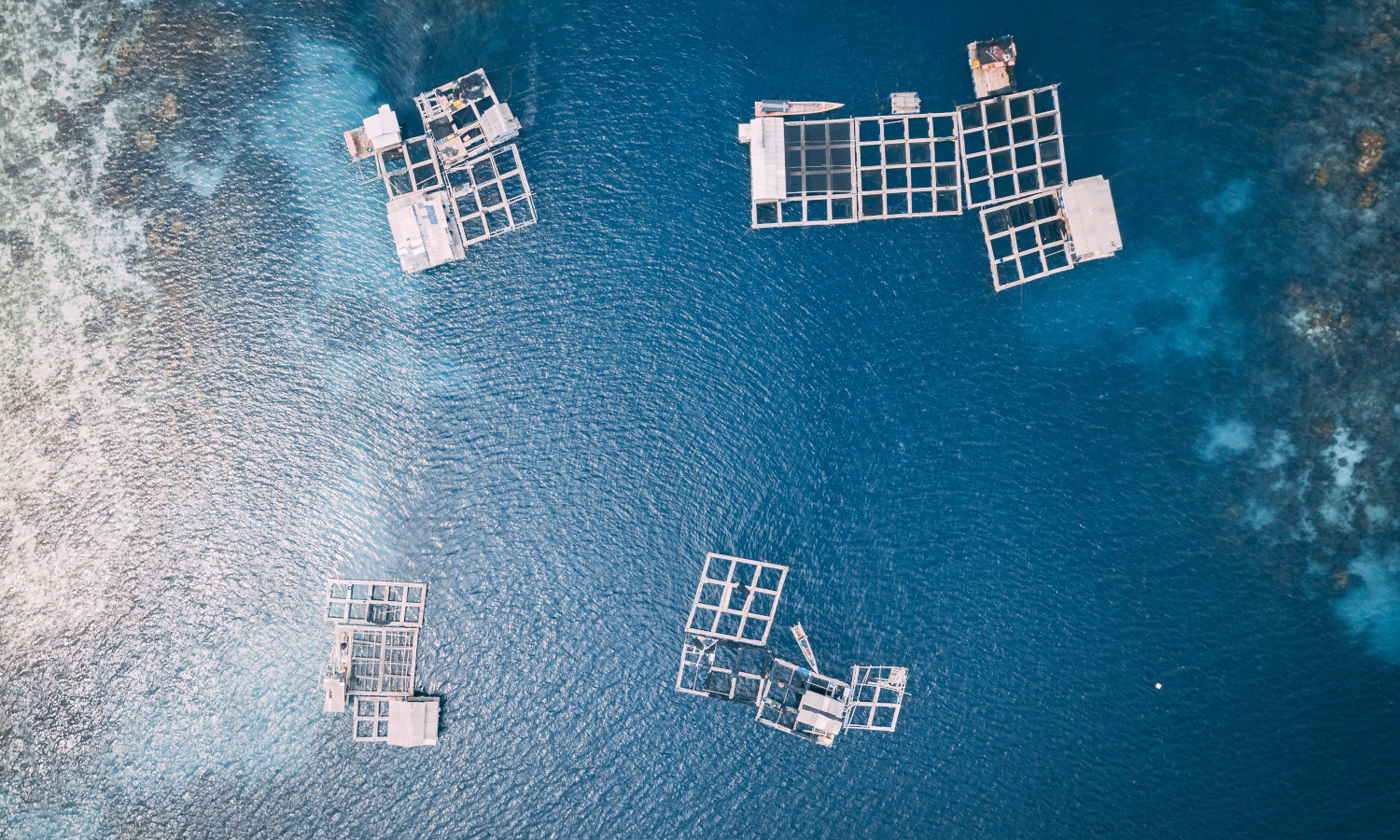Improved Aquaculture
Aquaculture, the cultivation of fish, shellfish, and other aquatic life, has seen a surge in growth, providing a vital food source globally. Sustainable aquaculture practices have the potential to reduce greenhouse gas emissions and mitigate the impacts of overfishing.

Image credit: foodtank.com
View open jobs in this Solution
Example Companies
- Upward Farms - Grows high ecological and quality standard leafy greens and fish using indoor vertical farming technology.
- AquaBounty Technologies - Develops genetically engineered salmon for faster growth and sustainability.
- Global Aquaculture Alliance - Promotes sustainable aquaculture practices worldwide.
- Marine Harvest - One of the largest seafood companies focusing on sustainable aquaculture.
- Cargill Aqua Nutrition - Provides sustainable feed solutions for aquaculture.
Overview
Aquaculture, the cultivation of fish, shellfish, and other aquatic life, has seen a surge in growth, providing a vital food source globally. The potential for aquaculture to reduce greenhouse gas emissions has been recognized. A paradigm shift towards sustainability is evident in global aquaculture, given overfishing and the rising demand for seafood.
- New Report Shows Sustainability in Global Aquaculture - Food Tank
- Aquaculture Innovation Challenge - WWF and the Gordon and Betty Moore Foundation
- Global Aquaculture Alliance - Promotes sustainable aquaculture practices worldwide
Progress Made
Significant advancements have been made in sustainable aquaculture practices:
- Aquaponics: Symbiotic cultivation of fish and plants, resulting in efficient food production and a minimized carbon footprint.
- Recirculating Aquaculture Systems (RAS): Water-efficient systems that lessen the environmental impact of aquaculture.
- Offshore Aquaculture: Operated in the open ocean, it diminishes the strain on coastal ecosystems.
Key proponents of sustainable aquaculture include:
- Aquaculture Stewardship Council (ASC)
- Global Aquaculture Alliance (GAA)
- World Wildlife Fund (WWF)
Solutions by Sector
Aquaponics
- Integrated Systems: Combining fish farming with hydroponics to create a closed-loop system.
- Urban Farming: Implementing aquaponics in urban settings to provide fresh produce and fish.
- Educational Programs: Teaching communities about sustainable food production through aquaponics.
Case Studies:
- Backyard Aquaponics, Australia: Provides DIY aquaponics kits and systems for home use (Backyard Aquaponics).
- Nelson and Pade, USA: Offers commercial aquaponics systems and training (Nelson and Pade).
- Urban Organics, USA: Operates large-scale aquaponics farms in urban areas (Urban Organics).
Recirculating Aquaculture Systems (RAS)
- Water Recycling: Reusing water within the system to reduce waste and environmental impact.
- Biofiltration: Using biological filters to maintain water quality and support fish health.
- Energy Efficiency: Implementing energy-efficient technologies to reduce operational costs.
Case Studies:
- Superior Fresh, USA: Operates the largest aquaponics facility in North America using RAS (Superior Fresh).
- Atlantic Sapphire, USA: Uses RAS technology to farm salmon sustainably (Atlantic Sapphire).
- Kingfish Zeeland, Netherlands: Produces yellowtail kingfish using RAS (Kingfish Zeeland).
Offshore Aquaculture
- Open Ocean Farming: Raising fish in offshore environments to reduce the impact on coastal ecosystems.
- Advanced Monitoring: Using technology to monitor and manage offshore farms.
- Sustainable Practices: Implementing practices that minimize environmental impact and promote fish health.
Case Studies:
- Blue Ocean Mariculture, USA: Operates offshore fish farms in Hawaii (Blue Ocean Mariculture).
- SalMar ASA, Norway: Pioneers offshore salmon farming with advanced technology (SalMar).
- Ocean Farm 1, Norway: World's first offshore fish farm, designed to withstand harsh ocean conditions (Ocean Farm 1).
Lessons Learned
- Planning: A unified vision involving all stakeholders is fundamental.
- Water Quality Monitoring: Regularly ensuring optimal water conditions is critical for aquatic health.
- Quality Feed: Directly impacts the health and growth of fish.
- Waste Management: Proper disposal is crucial to prevent water pollution.
- Renewable Energy: Essential for a reduced carbon footprint.
Challenges Ahead
- Scalability: Widening the adoption of sustainable aquaculture is hindered by public awareness, funding, and political support.
- Public Awareness: Largely, the populace is uninformed about its potential.
- Funding: Insufficient R&D investment.
- Political Support: Lacking in many regions.
Leading the charge in innovation is AquaBounty Technologies, developing faster-growing salmon.
Best Path Forward
- Awareness Building: Broaden understanding among producers and the public.
- Research & Development: Optimize techniques for varied systems.
- Financial Incentives: Promote adoption of improved aquaculture technologies.
- Regulations & Standards: Advocate for the broad application of sustainable practices.
Champions in sustainable aquaculture development include:
- World Aquaculture Society
- Aquaculture Stewardship Council
- Global Aquaculture Alliance
Image credit: foodtank.com